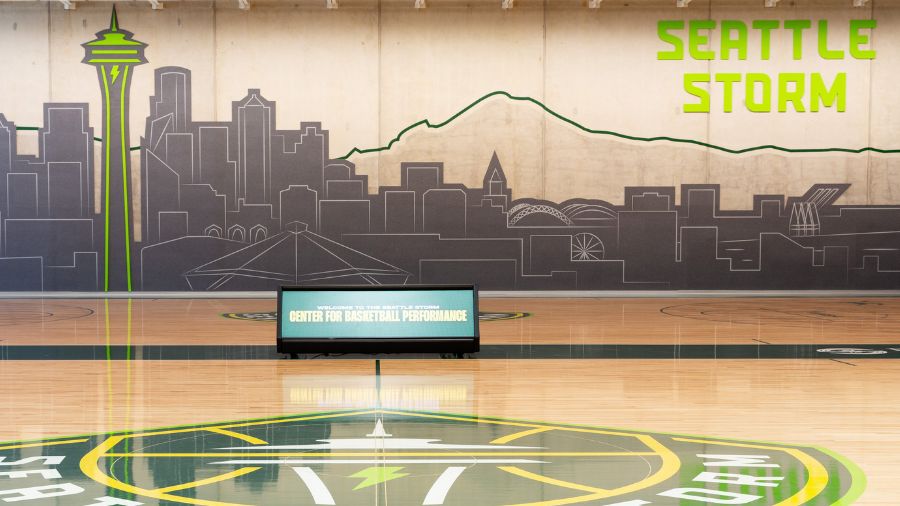The forgotten early history of Joint Base Lewis-McChord
Jul 10, 2015, 11:31 AM | Updated: 12:43 pm

McChord Field is included in a September 1938 map of the main air bases in the United States. (Associated Press image)
(Associated Press image)
Local civic leaders breathed a big sigh of relief this week as Joint Base Lewis-McChord (JBLM) suffered only minimal cuts in the latest round of reductions in America’s military forces.
JBLM has been a fixture around here for so long, its early history is mostly unknown. The land on the shores of American Lake in Pierce County was first used by the military in 1902 as a summer training encampment by what’s now known as the Washington National Guard.
Related: Congressman says JBLM’s loss is economy’s gain
Soldiers marched up from the U.S. Army’s Vancouver Barracks in Vancouver, Washington and marched down from Seattle, while others came on horseback or by train for several weeks of camping in tents and drilling in military techniques of that era.
That temporary facility in 1902 was first called Camp Weisenberger, in honor of Major John Jacob Weisenberger, who served with distinction in the Philippines in the Spanish-American War as a member of what was called the First Washington Volunteers (the Evergreen State soldiers for whom Seattle’s Volunteer Park is named).
The summer exercises continued, and the Weisenberger name stuck for about a decade. Then, the area became known as Camp Louis F. Hart around 1915. Hart was Lieutenant Governor at the time and would go on to become Washington’s ninth governor a few years later, when Governor Ernest Lister died in office.
On July 16, 1917, the site was officially renamed Camp Lewis, in honor of 19th century explorer Meriwether Lewis of Lewis & Clark fame. The land, which had been in private hands when it was first used by the military, had been purchased by Pierce County and donated to the federal government for use as a base; even then, a military base was recognized as an economic engine.
World War I broke out in 1914, but the U.S. didn’t declare war on Germany until April 1917. That summer, Camp Lewis was one of more than 30 U.S. Army bases established nationwide to gather and train troops to fight overseas. In July and August, simple wood-frame buildings were quickly constructed to house and feed thousands of troops.
In those years, Army bases were regional centers – providing ready defense against potential enemies and also serving as induction and training grounds for soldiers who lived nearby. Thus, the men who came to Camp Lewis had a distinct Western character, and originated mostly from Washington, Oregon, Idaho, Wyoming, California, Nevada, Utah, Montana, and Alaska Territory. The troops at Camp Lewis were organized that autumn into the 91st Division. They were nicknamed the “Wild West Division” and represented by a fir tree logo.
The official history of the 91st Division of the U.S. Army says that the first contingent of troops arrived at Camp Lewis on September 5, 1917, and that they “were so eager to begin [training] that they drilled in their civilian clothes.” The men prepped for nearly a year, and in June 1918 boarded trains to the East Coast where they’d get onto ships and head to France.
On their nearly week-long train journey across the U.S., the troops were saluted and honored by countless trackside demonstrations of patriotism. According to their official history, by the time they reached the East Coast, they “felt that they were backed by an undivided nation.” Once overseas, soldiers from Camp Lewis fought in France from September 1918 until the Armistice that November 11.
After World War I, Camp Lewis remained in use, but by the mid 1920s, its quickly constructed wartime wooden buildings began to fall into disrepair. In September 1927, relief came when the Army renamed the base Fort Lewis, which signified that the facility was now a permanent part of the Army’s network of facilities, and meant that millions would be spent to build new permanent brick buildings and other improvements.
Also around this same time, Pierce County began construction of an airfield adjacent to Fort Lewis. As war loomed in the Pacific and in Europe, the Army Air Force took over the airfield in 1938 and renamed it for Colonel William C. McChord, who’d died in a crash in Virginia in 1937. The federal government began beefing up McChord right away, constructing barracks and giant hangars with workers employed by the Great Depression-era Works Progress Administration.
Related: Washington National Guard makes major trade
Famous visitors to Fort Lewis in its early years include entertainer Bob Hope, who broadcast the season opener of his popular Pepsodent program live on September 22, 1942. President Franklin Roosevelt visited the base that day, too, but the news wasn’t released to the public for more than a week for security reasons.
Famous World War II correspondent Merriman Smith wrote that at Fort Lewis, “which is geared for instantaneous action to repel an enemy attack on the Northwest, the President reviewed crack infantry and field artillery troops.”
It would be more than 60 years until another sitting president — George W. Bush — would visit Fort Lewis in June 2004.
McChord Field was split off into McChord Air Force Base in 1947 when the Army and Air Force became separate branches of the service. The two bases were united again in January 2010 as a cost-saving measure and became officially known as Joint Base Lewis-McChord.













